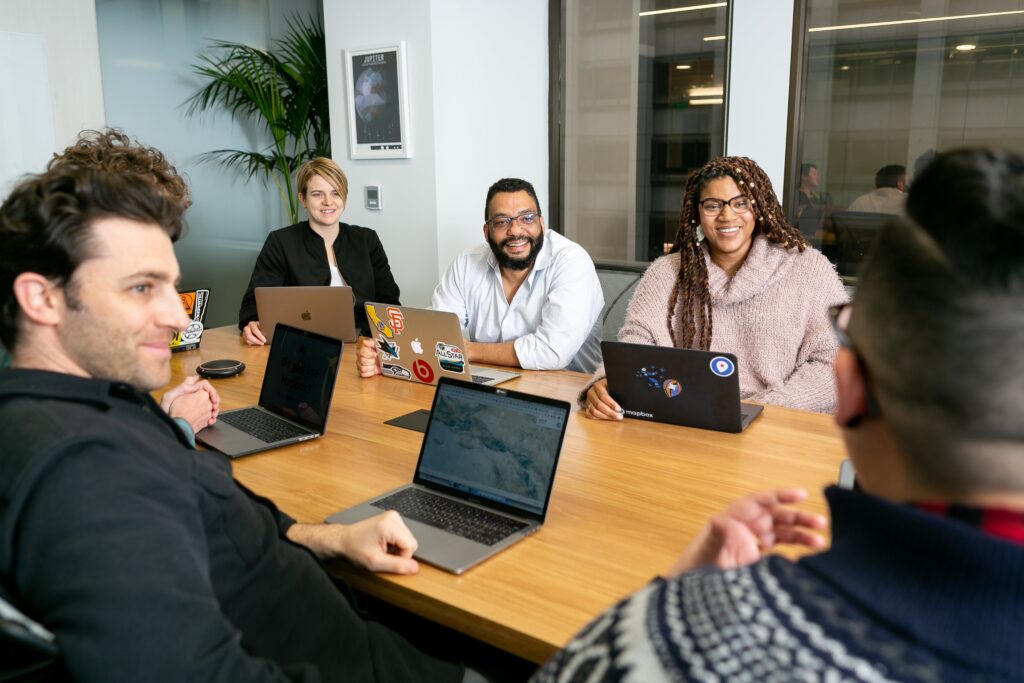If you feel like you spend too much time in useless meetings, you’re not alone. In a survey of 182 senior managers, 71% said meetings are unproductive and 65% said meetings are a barrier to getting work done. In order to maximize organizational efficiency, leaders need to ensure that every meeting counts. This means implementing strategies to make meetings more effective and inclusive for all attendees. Below are 11 tips for leading productive meetings.
1) Provide structure.
Leaders should send meeting agendas in advance so attendees have time to prepare their thoughts and questions. This is especially crucial for neurodivergent professionals who may need additional time to process information. Meetings should also begin on time and end on time – or early. If the meeting is running long, consider setting up a follow-up meeting to finish the conversation.
2) Establish meeting agreements.
Start any meeting by establishing a safe space where all attendees feel comfortable sharing their thoughts, ideas, and suggestions. Some recommended agreements include:
- Be fully present
- Listen to understand
- Assume positive intent
- Use your voice; make space to hear other voices
- Engage in dialogue, not debate
- Be open, transparent, and willing to admit mistakes
3) Invite people to speak up.
As a leader, you’ve probably noticed that some team members are frequent contributors, while others need encouragement to share their opinions. If you notice the conversation is leaving out certain voices, create opportunities for others to share. Be specific in the input you’re looking for, so folks feel more confident participating. For instance, rather than asking simply “Brenda?” ask “Brenda, does that timeline seem reasonable to you?”

4) Call out interruptions.
In order to ensure all voices are heard, it’s critical that leaders call attention to and correct interruptions. Studies show that women are interrupted more frequently than men, and leaders should guard against this behavior to ensure equity. When you notice one colleague interrupting another, say something along the lines of “I’d like to hear Casey finish their thought” or “Wait one second, and I’ll come back to you. Casey, would you please finish your thought?” If you notice that a specific team member interrupts frequently, you might pull them aside to address the issue directly.
5) Give credit where credit is due.
Recognize each person’s contributions to the team and the conversation by thanking individuals for their effort. For instance, you might give a shout-out in front of the full team, such as “Scott did a great job leading the discovery call with our client last week.” Or, “Stephanie, that’s a great idea. I’ll be sure to bring that to the executive team.” And, it’s up to leaders to notice who suggests an idea first. If one person suggests an idea and another person later repeats it, say something like, “Yes, Stephanie just suggested that idea. It sounds like we are all in agreement.”
6) Use (and encourage) inclusive and thoughtful language.
Inclusive language has a large impact on employees’ sense of day-to-day belonging. Be sure to implement inclusive language best practices into your own communications and encourage others to do the same. If you do hear someone use noninclusive language, it’s your job as a leader to correct them.
Aside from inclusive language, be mindful of how you phrase your responses to certain scenarios, as these responses can impact how people view future meetings. As an example, saying “Let’s give everyone five minutes to join” can inadvertently contribute to a culture where people don’t feel the need to show up to meetings on time. Meanwhile, saying you’ll take something “offline” is usually interpreted as, “It’s going nowhere.” Instead, say something along the lines of “We definitely need to talk about that, but we don’t have time today. Let’s schedule another time this week to set up a longer conversation.”
7) Make meetings accessible.
Be sure that all attendees can fully access and participate in your meeting, whether virtual or in-person. For virtual meetings, enable closed captions and make sure audio and video outputs are high quality. For in-person meetings, make sure pathways are clear and rooms are navigable for those with mobility issues.
8) Use various delivery methods.
Depending on the information you’re discussing, it may be useful to display information in several formats. People have varying learning styles, and might interpret information best by listening to an explanation, reading a text, or looking at charts. For instance, if you’re discussing earnings for the quarter, this information should be delivered verbally and graphically.
9) Provide space for follow-up questions and input.
As mentioned before, neurodivergent professionals may need more time to process information. Therefore, when you solicit questions and final thoughts at the end of the meeting, they may not be ready to share. If an employee comes to you with additional input a few hours or days after the meeting, be sure to consider what they have to say.
10) Send meeting minutes.
After meetings, provide attendees with a record of key discussion items and decisions made. This helps attendees remember the information and also provides helpful reference for those unable to attend.
11) Only hold necessary meetings.
If you’re like most professionals, odds are you’ve sat through a meeting only to leave thinking “That could have been an email.” As a leader, make sure you’re utilizing your employee’s time wisely and only calling necessary meetings. Meetings are critical for certain conversations, such as brainstorming sessions or employee reviews; but if a status update can be quickly relayed via email, opt for digital communication.
Making sure your meetings are effective and inclusive can save your company time and money by making every meeting productive and useful for attendees. Instead of wasting time, create meetings that foster innovation and problem solving. Looking for additional ways to improve your inclusive leadership skills? Explore TDM leadership development.
Kaela Sosa is co-founder and Manager, Curriculum and Programming at The Diversity Movement. Her expertise includes psychology, gender identity and sexual orientation and racial identities. Kaela has written and spoken about a range of topics: active allyship, the inclusive talent lifecycle, disability etiquette, LGBTQ+ inclusion and inclusive language. At The Diversity Movement, she leads the development and execution of learning programs, including digital learning, online courses, certificate programs and certification opportunities. Connect with or follow Kaela on Linkedin to learn more.




